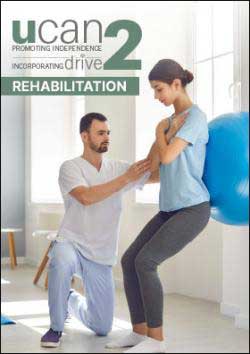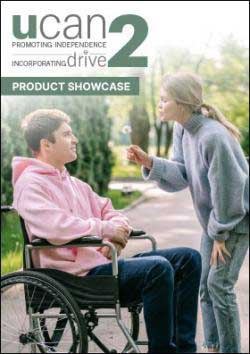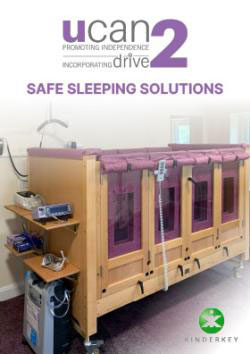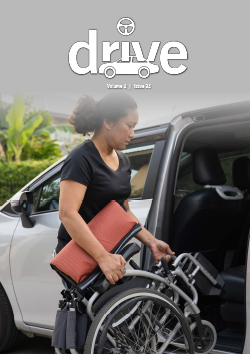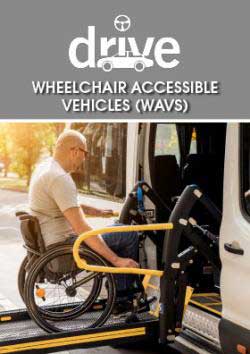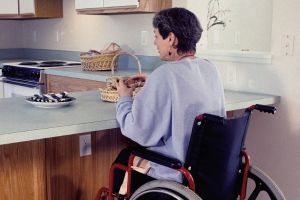
You no doubt want to make your home a comfortable, safe, and welcoming environment where all your loved ones can spend time with one another. But if you have older relatives who require some extra help getting around, because of reduced mobility — or have recently moved in due to a decline in their mobility — you may be realising that your home could use some accessible updates.
Making a few key changes to your home layout and investing in specialist furniture can make the world of difference when regularly caring for elderly people, and can give them back a sense of independence and dignity that everyone deserves. Below, CLH Healthcare share five ways you can start making your home more accessible to all.
Start small
If you have reduced mobility and want to start creating a more accessible home environment on a shorter deadline or while sticking to a budget, there are a few small changes you can make that will have a noticeable difference. In case you feel unsure about where to start, your local council will offer a home assessment which you can book through the government website. This can highlight potential hazards you may not have even considered, such as the width of your doorways or the height of kitchen countertops for those using wheelchairs. You may even qualify for council funding or grants to help with the cost of these alterations.
The NHS has a handy list of smaller household gadgets that can make home life easier for those with limited mobility, and this can be a great place to start if you’re on a budget or can’t make any larger home improvements quite yet. These gadgets might range from slip mats for the bath or shower (or for any smooth surface like tile and linoleum) to hooks or shoehorns that make getting dressed that bit easier. One of the most cost-effective and easily installed mobility aids, however, are grab rails: placing rails in areas where you notice your relatives struggling or slowing down is a simple yet effective way of preventing falls around the house.
The bathroom
The bathroom can often be the most hazardous room in the house due to the number of slippery surfaces to deal with on a daily basis. One of the first issues elderly relatives may come across is using the toilet, as just like getting in and out of a chair, this requires joint strength and balance that may be waning. Firstly, installing grab rails around the toilet, bath, and shower areas is a must — as well as this, however, you may want to opt for a taller toilet seat (around 19 inches high) to make this transition from sitting to standing easier.
Alongside smaller details like larger, easy-to-turn handles for taps, you may also choose to make more significant alterations like converting a standard shower into a walk-in shower or creating a whole new wet room. This will reduce hazards like tripping over the shower threshold or the action of stepping in and out of a bathtub. As well as being beneficial for older relatives, this will make it easier and safer for anyone who has restricted mobility to go to the bathroom, no matter what age group they are in. This is particularly important as having the right precautions and specialist furniture in place can allow them to go to the bathroom unaided, which can help to preserve their independence and self-confidence.
The bedroom
Good quality sleep is a pivotal part of anyone’s well-being, but particularly for those dealing with health issues or chronic pain. So, it’s important to not only invest in a high-quality mattress but also consider any other care equipment that your elderly relative may benefit from. Depending on the extent of their mobility, this may include a hoist to assist them from their bed and into a wheelchair, or a commode, which is a chair with a concealed toilet to minimise trips to and from the bathroom during the night. You might also install a stair lift if their bedroom is not on the ground floor.
The dining room
When it comes to the dining room, investing in sturdy, spacious, and easy-to-clean furniture will help to make mealtimes easier for everyone. Try to opt for designs that have integral arms and skis, padded backs, and wipeable materials such as faux leather vinyl, so that your older relatives can enjoy their meals comfortably and with maximum support for their back. Keeping a supply of dining aids in your kitchen such as bendable cutlery with extra grip can also make mealtimes go more smoothly.
The living area
As a generous portion of our time is often spent in the living room, supportive, mobility-friendly furniture is a wise investment for anyone caring for the elderly. For instance, getting in and out of chairs can often be difficult for older people as their joints become weaker and their balance becomes less reliable.
So, when making your living room more accessible for all, a set of rise-and recline-chairs are a great place to start. These chairs have a remote that allows users to both elevate their legs (which is important for those with poor circulation) and raise the chair up at an incline, meaning they are already in a semi-standing position when they want to get up. Again, this can offer elderly people a valuable sense of independence, while also reducing the chance of falls.
“If you are caring for elderly relatives or have them visit regularly, making a few key home improvements will help to prevent any accidents like slips and falls. This is not only important in terms of safety, but having accessible features in place also means that your loved ones with reduced mobility can retain their independence and dignity, helping them feel more like themselves.
“These home updates can range from small yet effective gadgets to larger investments like specialist furniture or changing the overall layout of a room. Whatever you can do to make your elderly relative’s home more accessible will make a world of difference to everyone’s quality of life.”
-Samantha Hendy, Sales Advisor from CLH Healthcare
Article courtesy of CLH Healthcare
Image courtesy of Unsplash






